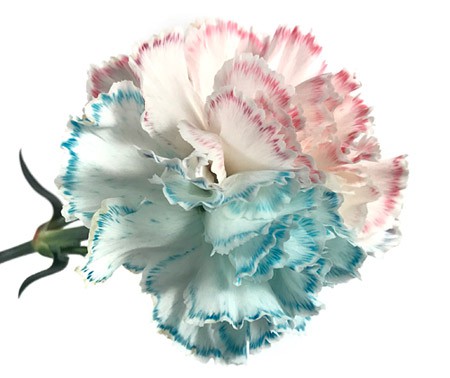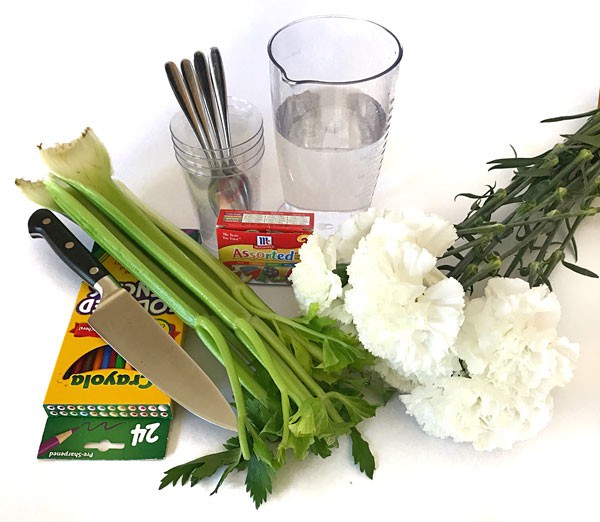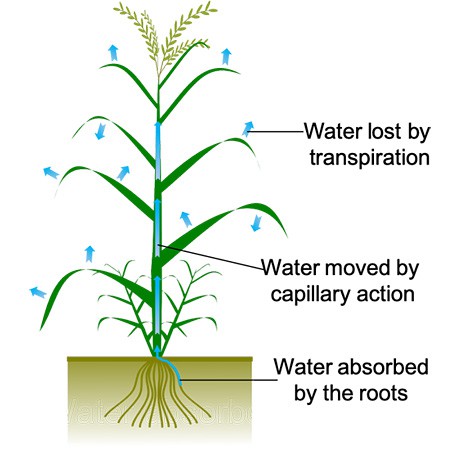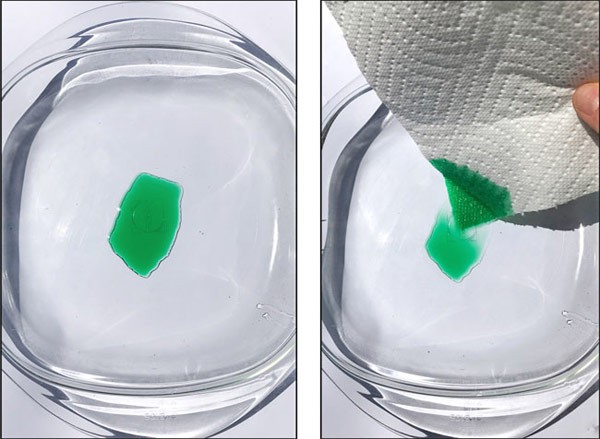Water Transport in Plants
Summary

Overview
Your students might know that plants need water to survive. But how does a plant "drink" and get water from the soil all the way up to its' leaves? In this lesson plan, students will observe how plants (flowers and celery) suck up dye-stained water, which makes the petals and leaves change color! This allows students to visualize the process of how water moves through a plant.
Learning Objectives
- Name the basic needs of a plant
- Conduct an investigation to find out how water moves through a plant
NGSS Alignment
This lesson helps students prepare for these Next Generation Science Standards Performance Expectations:- 2-LS2-1. Plan and conduct an investigation to determine if plants need sunlight and water to grow.
|
Science & Engineering Practices
Planning and Carrying Out Investigations.
Plan and conduct an investigation collaboratively to produce data to serve as the basis for evidence to answer a question.
Make predictions based on prior experiences. Analyzing and Interpreting Data. Record information (observations, thoughts, and ideas). |
Disciplinary Core Ideas
LS2.A: Interdependent Relationships in Ecosystems.
Plants depend on water and light to grow.
|
Crosscutting Concepts
Structure and Function.
The shape and stability of structures of natural and designed objects are related to their function(s).
|
Materials
 Image Credit: Svenja Lohner, Science Buddies / Science Buddies
Image Credit: Svenja Lohner, Science Buddies / Science Buddies
Materials for each student:
- White flower such as carnations
- Celery stalk with leaves attached
- Cups that can hold the flower and the celery stalk
- Water
- Paper
- Colored pencils
Materials that can be shared:
- Teaspoons
- Food coloring (red or blue, 10 drops per student)
- Timer
- Camera (optional)
Materials for teacher:
- Sharp knife
- Measuring Cup
Background Information for Teachers
This section contains a quick review for teachers of the science and concepts covered in this lesson.All plants, even those living in deserts, need water to survive. Plants use water to keep their roots, stems, leaves, and flowers healthy and it prevents them from drying out and wilting. Water in a plant is also used to carry dissolved nutrients throughout the plant. Most of the time, plants get their water from the ground. This means that the plant has to transport the water from its roots up throughout the rest of the plant as shown in Figure 1. How do plants do this? The first step is taking up water from the soil through their roots, which are permeable, meaning they are great for absorbing water. From the roots, the water moves through various cell layers into the part of the plant, called xylem, that is specialized for water transport. The xylem tissue looks like open tubes similar to a garden hose, through which the water can move easily over longer distances.
 Image Credit: Svenja Lohner, Science Buddies / Science Buddies
Image Credit: Svenja Lohner, Science Buddies / Science Buddies
Figure 1. Water path through a plant driven by transpiration and capillary action.
The driving factors that make water move through the xylem are transpiration and capillary action (Figure 1). Transpiration is when the water from the leaves and flower petals evaporates. The water leaving the plant creates a suction force that pulls more water upward. However, for water molecules to travel up the xylem, they have to overcome gravity. This is possible due to capillary action. Capillary action happens when the forces binding the water molecules together (cohesion and surface tension) and the forces attracting the water to the xylem surface (adhesion) are greater than the force of gravity. As a result, the combined cohesion and adhesion forces create a constant chain of water molecules moving up the plant. As more water evaporates, the plant pulls up more and more water. This process allows plants to move water to tree canopies more than to 100 meters above the soil surface!
In this lesson plan, students will be able to observe this water movement through the stem of a plant. They will let a white flower and a leafy celery stalk sit in dyed water. Then they will be able to watch how the flower and leaves change color as the water moves through the plant. As they observe the flower and celery leaves change color over time, they will realize that plants meet their need for water by transporting it up from their roots, through tiny tubes in their stem, to the leaves, and the top of the plant.
A simple way to demonstrate capillary action is to take a teaspoon of water and gently pour it in a puddle on a surface, as shown in Figure 2 on the left below. You will notice that the water stays together in the puddle, rather than flattening out across the surface. This happens because of cohesion and surface tension. Cohesion is the attractive force that pulls similar substances together. In this case, the individual water molecules are being pulled together. The force of the pull is strongest at the edge of the puddle. The water molecules at the edge have fewer neighboring water molecules, so they cling more tightly to those around them; this is known as surface tension. Now gently dip the corner of a paper towel in the puddle of water. The water is attracted to the paper and "climbs" up the paper towel—this is capillary action, as shown in Figure 2 on the right below.
 Image Credit: Svenja Lohner, Science Buddies / Science Buddies
Image Credit: Svenja Lohner, Science Buddies / Science Buddies
Figure 2. A demonstration of capillary action. Surface tension (which is caused by cohesion) holds the water puddle together (left). Adhesion forces allow the water to "climb up" the paper towel (right).



